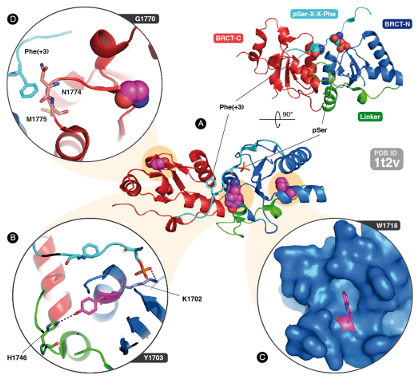Functional and Structural Analysis of C-Terminal BRCA1 Missense Variants

Quiles F, Fernández-Rodríguez J, Mosca R, Feliubadaló L, Tornero E, Brunet J, Blanco I, Capellá G, Pujana MA, Aloy P, Monteiro A, Lázaro C, Germline inactivating mutations in BRCA1 and BRCA2 genes are responsible for Hereditary Breast and Ovarian Cancer Syndrome (HBOCS). Genetic testing of these genes is available, although approximately 15% of tests identify variants of uncertain significance (VUS). Classification of these variants into pathogenic or non-pathogenic type is an important challenge in genetic diagnosis and counseling. The aim of the present study is to functionally assess a set of 7 missense VUS (Q1409L, S1473P, E1586G, R1589H, Y1703S, W1718L and G1770V) located in the C-terminal region of BRCA1 by combining in silico prediction tools and structural analysis with a transcription activation (TA) assay. The in silico prediction programs gave discrepant results making its interpretation difficult. Structural analysis of the three variants located in the BRCT domains (Y1703S, W1718L and G1770V) reveals significant alterations of BRCT structure. The TA assay shows that variants Y1703S, W1718L and G1770V dramatically compromise the transcriptional activity of BRCA1, while variants Q1409L, S1473P, E1586G and R1589H behave like wild-type BRCA1. In conclusion, our results suggest that variants Y1703S, W1718L and G1770V can be classified as likely pathogenic BRCA1 mutations.
PLoS ONE,
2013, 8(4), e61302
Pubmed: 23613828
Direct link: 10.1371/journal.pone.0061302
